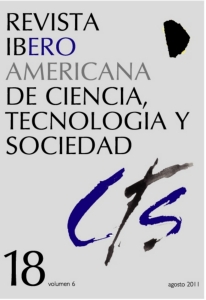Public policy and ICTs in education
DOI:
https://doi.org/10.52712/issn.1850-0013-756Keywords:
information and communication technologies, public policy, education, societyAbstract
The following article details the current state of public policies for the social acceptance of Information and Communication Technologies (ICTs) in educational communities located in Medellín, Colombia, and the impact that these policies have had. The tools used to measure the impact of these policies have been based on how these technologies are applied and used, together with how well students and teachers that are a part of state schools with student populations that come from lower socioeconomic backgrounds have accepted these technologies. The implementation of these policies has transformed both teaching and learning processes in educational settings, where ICTs have been included into the curriculum. There has also been a significant impact on the societies that surround these schools as they use ICTs in extra curricular activities such as “open classroom” days. The roles that teachers and students take in these new learning and teaching environments have also evolved in such a way that there is more access to information and knowledge can be more readily attainable.
Downloads
References
ALCALDÍA DE MEDELLÍN (2008): “Línea 2: Desarrollo y Bienestar para toda la Población”, en Alcaldía de Medellín: Medellín, es solidaria y competitiva. Plan de Desarrollo 2008-2011, Medellín, pp. 55-65.
CLARO, M. (2010): La Incorporación de Tecnologías Digitales en Educación. Modelos de identificación de buenas prácticas, CEPAL - Colección documentos de proyectos, p. 30.
COLCIENCIAS (2008): Política Nacional de fomento a la investigación y a la innovación, Colombia construye y siembra futuro, Bogotá.
HARTMAN, D. (2000): “What will be the influences of media on literacy in the next millenium?”, Reading Research Quarterly, Vol. 35, Nº 2, pp. 281-282.
KELLNER, D. (2004): “Revolución tecnológica, alfabetismos múltiples y la reestructuración de la educación”, en I. Snyder (Comp.): Alfabetismos Digitales. Comunicación, innovación y educación en la era electrónica, Granada, España, Consorcio para la enseñanza abierta y a distancia de Andalucía, pp. 227-250.
MINISTERIO DE COMUNICACIONES (2008): Plan Nacional de Tecnologías de la Información y las Comunicaciones, Bogotá.
MINISTERIO DE EDUCACIÓN NACIONAL (2008): Plan decenal de educación 2006-2016, Bogotá.
OCDE (2001): Learning to Change-ICT in Schools, París.
ONU (2000): Objetivos de Desarrollo del Milenio - ODM, disponible en http://www.undp.org/spanish/mdg/basics.shtml
ONU (2010): Information Economy Report. ICT´s Enterprise and Poverty Alleviation, Nueva York y Génova.
SEVERIN, E. (2010): “Tecnología de la Información y la Comunicación (TIC) en Educación. Marco Conceptual e indicadores”, Notas Técnicas # 6, Banco Interamericano de Desarrollo (BID), División de Educación, pp. 5-12.
UNESCO (2007): “Educación para todos en el 2015, ¿alcanzaremos la meta?”, en Unesco: Informe de seguimiento a la EPT en el mundo, París, Francia, pp. 11-40.
UNESCO (2008): Estándares de competencia en TIC para docentes, Londres
Downloads
Published
How to Cite
Issue
Section
License
Copyright (c) 2024 CC Attribution 4.0

This work is licensed under a Creative Commons Attribution 4.0 International License.
All CTS's issues and academic articles are under a CC-BY license.
Since 2007, CTS has provided open and free access to all its contents, including the complete archive of its quarterly edition and the different products presented in its electronic platform. This decision is based on the belief that offering free access to published materials helps to build a greater and better exchange of knowledge.
In turn, for the quarterly edition, CTS allows institutional and thematic repositories, as well as personal web pages, to self-archive articles in their post-print or editorial version, immediately after the publication of the final version of each issue and under the condition that a link to the original source will be incorporated into the self-archive.











